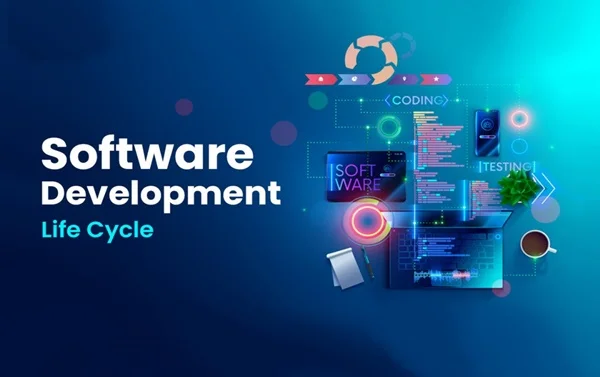
Top 10 Software Development Trends to Watch in 2025
As we approach 2025, the landscape of software development is poised for significant transformation, driven by advancements in technology, changing market demands, and evolving user expectations. This essay explores the top 10 software development trends that are likely to shape the industry in the coming years.
1. Artificial Intelligence and Machine Learning Integration
AI and ML have already begun to revolutionize software development, and by 2025, their integration will become increasingly seamless and ubiquitous. Developers will leverage AI to automate testing, code generation, and debugging processes, enhancing efficiency and reducing errors. Machine learning algorithms will also enable more personalized user experiences, predictive analytics, and intelligent decision-making within applications. The rise of AI-driven development tools and platforms will further democratize AI, making it accessible to a broader range of developers.
2. Low-Code and No-Code Development
The low-code and no-code movement is gaining momentum, allowing non-technical users to create applications with minimal programming knowledge. By 2025, these platforms will become more sophisticated, enabling the rapid development of complex applications. This trend will democratize software development, empowering businesses to innovate quickly and reduce their reliance on traditional coding teams. Low-code and no-code platforms will also integrate AI capabilities, making it easier to build intelligent applications without deep technical expertise.
3. Edge Computing
Edge computing, which involves processing data closer to where it is generated, will continue to grow in importance. As the Internet of Things (IoT) expands, the need for real-time data processing and reduced latency will become more critical. By 2025, edge computing will enable more responsive and context-aware applications, particularly in areas such as autonomous vehicles, smart cities, and industrial automation. Developers will need to adopt new paradigms and tools to optimize applications for edge environments.
4. Quantum Computing
While still in its early stages, quantum computing has the potential to solve complex problems that are currently infeasible with classical computing. By 2025, we can expect to see more practical applications and tools for quantum computing, particularly in fields such as cryptography, optimization, and materials science. Software developers will need to explore new algorithms and programming models to harness the power of quantum computers, opening up new opportunities for innovation.
5. Blockchain and Decentralized Technologies
Blockchain technology is maturing and finding applications beyond cryptocurrencies. By 2025, it will play a crucial role in various sectors, including supply chain management, healthcare, and financial services. Decentralized applications (dApps) and smart contracts will become more prevalent, offering enhanced security, transparency, and trust. Developers will need to familiarize themselves with blockchain frameworks and protocols to build secure and decentralized solutions.
6. Serverless Architecture
Serverless architecture, which allows developers to build and run applications without managing servers, will continue to gain popularity. By 2025, serverless platforms will offer more robust and scalable solutions, reducing infrastructure costs and improving application performance. This trend will enable developers to focus more on writing code and less on managing infrastructure, leading to faster development cycles and more efficient resource utilization.
7. Multi-Cloud and Hybrid Cloud Strategies
As businesses increasingly adopt cloud services, the need for multi-cloud and hybrid cloud strategies will become more apparent. By 2025, these strategies will help organizations optimize costs, improve resilience, and avoid vendor lock-in. Developers will need to design applications that can seamlessly operate across different cloud environments, leveraging the strengths of each platform while maintaining consistency and security.
8. Cybersecurity and Privacy
With the rise of digital transformation and the increasing number of connected devices, cybersecurity and privacy will remain top priorities. By 2025, developers will need to incorporate robust security measures and privacy-by-design principles into their applications. Advances in encryption, secure coding practices, and regulatory compliance will drive the development of more secure and privacy-focused software solutions.
9. 5G and Beyond
The rollout of 5G networks will enable faster data transfer and lower latency, opening up new possibilities for software development. By 2025, 5G will support more advanced applications, such as augmented reality (AR), virtual reality (VR), and real-time analytics. Developers will need to optimize their applications for 5G, taking advantage of its capabilities to deliver richer and more interactive user experiences.
10. Augmented Reality (AR) and Virtual Reality (VR)
AR and VR technologies are becoming more accessible and integrated into various industries, including entertainment, education, and healthcare. By 2025, these immersive technologies will play a significant role in software development, enabling the creation of more engaging and interactive applications. Developers will need to learn new skills and tools to build AR and VR experiences that are both compelling and user-friendly.
The software development landscape in 2025 will be characterized by rapid innovation, increased automation, and a focus on user experience and security. Developers who stay informed about these trends and adapt their skills accordingly will be well-positioned to succeed in the evolving technological environment. Whether it’s leveraging AI and ML, embracing low-code and no-code platforms, or optimizing for edge computing and 5G, the future of software development promises to be both exciting and transformative.
